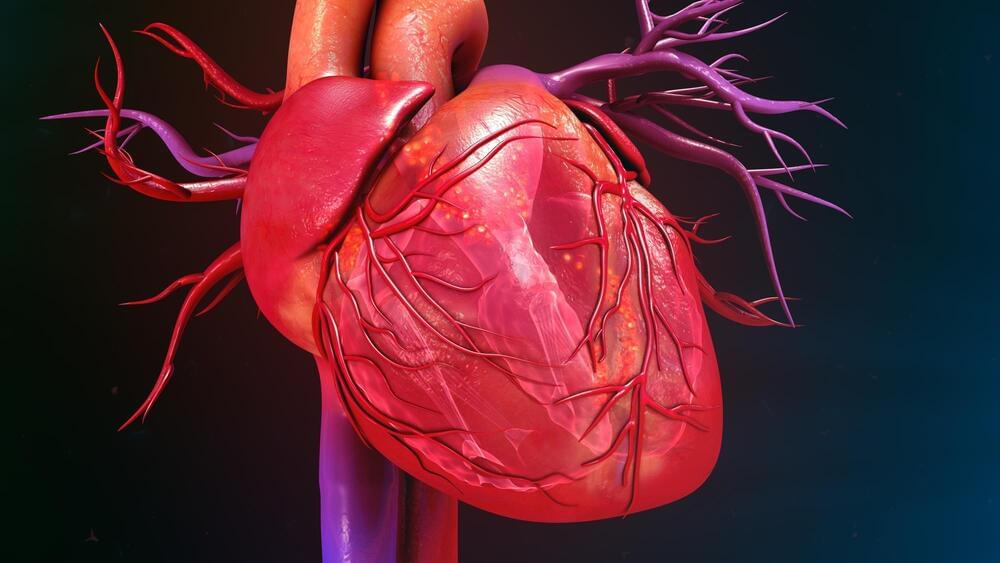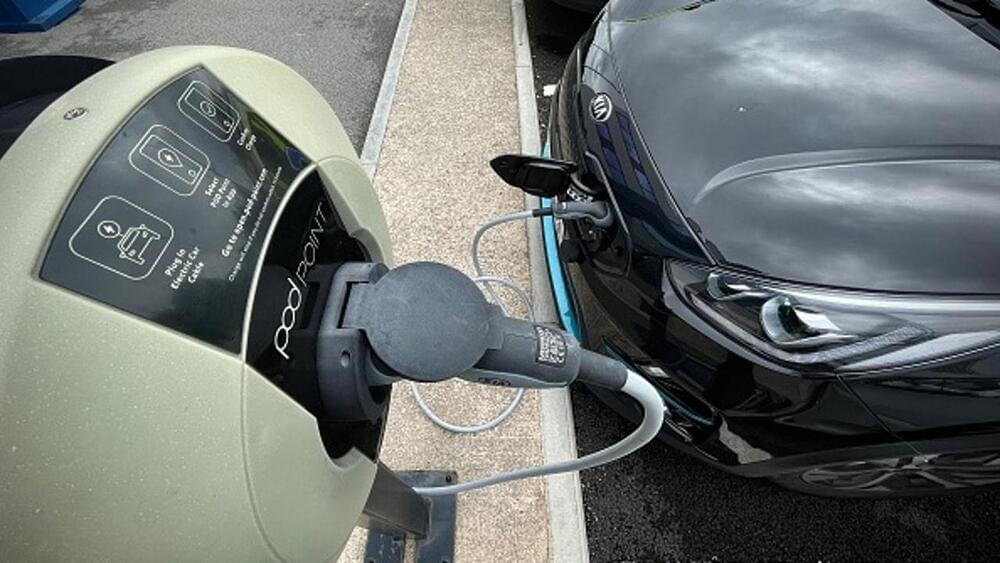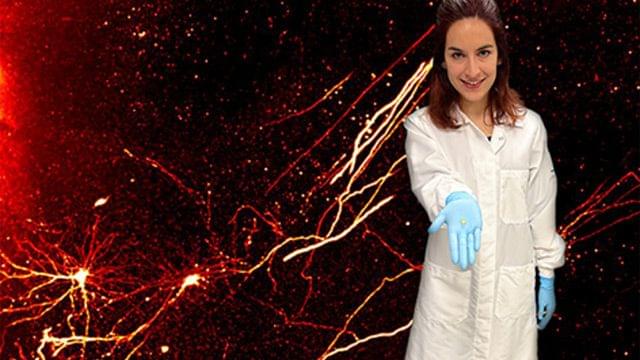Attaining ‘sentience’ is not easy for an AI robot. Thousands of experts and researchers are working on AI and robots to crack the code and finally attain the one innovation that can change the entire course of the tech industry.




Researchers at the University of Houston have demonstrated a new technique for helping heart cells regenerate after a heart attack, using mRNA to return the cells to a stem-cell-like state. Tests in mice showed drastic improvements to heart function a month after a heart attack.
Unlike most tissues in the body, heart cells have a limited ability to regenerate after injury. That’s a big part of why heart attacks are so deadly – afterwards, non-beating scar tissue forms instead, which can lead to further attacks and eventually heart failure.
In recent years, scientists have been investigating how to repair broken hearts by regenerating the cells, with some success seen using placental stem cells, reprogramming structural cells into ones that beat, or using stem cell messengers to induce the heart to self-repair. Others have identified transcription factors that can get heart cells to begin replicating again.

AUSTIN, Texas — Texas is planning to add enough electric vehicle charging stations throughout the state to support 1 million electric vehicles with dozens of new stations to allow for easier long-distance travel.
In a draft plan released this month, the Texas Department of Transportation broke down a five-year plan to create a network of chargers throughout the state, starting along main corridors and interstate highways before building stations in rural areas.
The plan is to have charging stations every 50 miles along most non-business interstate routes.
We’re live now, on Space Renaissance YouTube channel, with Wes Faires, giving a lecture on space law:
The Working Group on Space Resources under the United Nations Committee on Peaceful Uses of Outer Space (UN COPUOS), presents an opportunity for a legally binding instrument to develop under the auspices of the United Nations Committee on Peaceful Uses of Outer Space (UNOOSA), and do so in a manner favorable to space resource utilization for the private sector. The intended result of the Working Group, as stated its 5 years workplan, is to conclude discussions on the development of space resources followed with possible adoption by the United Nations General Assembly as a dedicated resolution or other action. This presentation draws a parallel to a similar scenario with regard to the United Nations Convention on the Law of the Sea (UNCLOS), where a working group on Deep Sea-Bed resources, executed via specific legal channels within the United Nations, led to a legally binding instrument: The 1994 Agreement on Implementation, resulting in a modification of the international framework governing ocean floor minerals.
The avenue utilized for the execution of the 1994 Agreement on Implementation for UNCLOS provides a course for legally binding instrument to develop via the Working Group on Space Resources. Such an instrument could serve to interpret and elaborate on ambiguities within the Outer Space Treaty framework, while avoiding any parallels to the commercially harmful aspects of the top-down governance structure embedded within the International Seabed Authority.
A short bio.
Charles Wesley Faires made his first entry into the archives of claims to property in Outer Space during college in 2003 when he recorded a 4 page Affidavit claiming ownership to the three stars of Orion’s Belt. In 2006, after graduating with a B.S. in Communications, he made the decision to use this project as a tool obtain an answer from an official source on the legality of off-planet property claims under the Outer Space Treaty once and for all. A formal letter campaign pinpointed the competent authorities for such matters within the U.S. State Department and the United Nations Office of Outer Space Affairs. He made the decision to take the issue of formal confirmation on the compliance or violation of his Claim of Ownership to Orion’s Belt directly to the source of space law which would require participation in the U.N. Committee of Peaceful Uses of Outer Space (UNVIENNA) – as a private citizen. While at the proceedings, he approached the competent US authorities simply asking whether the claim, in and of itself, executed by a “natural person” stood in violation of the Outer Space Treaty – in the view of the competent authority on behalf of the U.S., there was no violation. This paved the way for formal confirmation that nothing in the underlying documents is prohibited by domestic or treaty law, clearing it for international legal use. Condoleezza Rice’s signature upon a Claim of Ownership to the 3 stars of Orion’s Belt *executed after contact with the competent authority for space/treaty affairs* in November 2008 was the first formal confirmation on behalf of a State Party that private property rights were not patently unlawful under the Outer Space Treaty. He has obtained multiple reaffirmations upon various such claims under the past 3 secretaries of state and is now looking to gain similar confirmation outside the U.S.

In forthcoming years, everyone will get to observe how beautifully Metaverse will evolve towards immersive experiences in hyperreal virtual environments filled with avatars that look and sound exactly like us. Neil Stephenson’s Snow Crash describes a vast world full of amusement parks, houses, entertainment complexes, and worlds within themselves all connected by a virtual street tens of thousands of miles long. For those who are still not familiar with the metaverse, it is a virtual world in which users can put on virtual reality goggles and navigate a stylized version of themselves, known as an avatar, via virtual workplaces, and entertainment venues, and other activities. The metaverse will be an immersive version of the internet with interactive features using different technologies such as virtual reality (VR), augmented reality (AR), 3D graphics, 5G, hologram, NFT, blockchain, haptic sensors, and artificial intelligence (AI). To scale personalized content experiences to billions of people, one potential answer is generative AI, the process of using AI algorithms on existing data to create new content.
In computing, procedural generation is a method of creating data algorithmically as opposed to manually, typically through a combination of human-generated assets and algorithms coupled with computer-generated randomness and processing power. In computer graphics, it is commonly used to create textures and 3D models.
The algorithmic difficulty is typically seen in Diablo-style RPGs and some roguelikes which use instancing of in-game entities to create randomized items. Less frequently it can be used to determine the relative difficulty of hand-designed content to be subsequently placed procedurally, as can be seen with the monster design in Unangband. For example, the designer can rapidly create content, but leaves it up to the game to determine how challenging that content is to overcome, and consequently where in the procedurally generated environment this content will appear. Notably, the Touhou series of bullet hell shooters use algorithmic difficulty. Though the users are only allowed to choose certain difficulty values, several community mods enable ramping the difficulty beyond the offered values.

Why we need to adopt an abundance mindset.
Peter Diamandis shared an email blast about dire headlines that keep us on edge: the war in Ukraine, food and gasoline prices, climate change, and the neverending pandemic. Getting away from bad news is difficult, it appears, because of the way we are wired. Mass media feeds the bad far more than the good.
In his missive, Peter talks about Matt Ridley, a zoologist, who wrote and published The Rational Optimist in 2010. The book takes a profoundly optimistic view of human progress, a counterblast to the prevailing pessimism of our day. Ridley coined the phrase “moaning pessimism” to describe the current state.
The following summarizes Peter’s talking points joined by some editorializing on my part. I welcome your optimism, less so your pessimism in any comments you wish to share with my subscribers and casual visitors and readers.
Is there any reason for optimism today asks Peter? A glance at current headlines is enough to set anybody on edge. And with an endless media stream of bad press that includes online and hard copy, it’s hard to be optimistic. What makes all of this worse is that evolution has shaped us to be acutely aware of danger so the bad gets larger mindshare than anything good and our ability to appreciate the positive that is happening is compromised.

Scientists from the University of California, Irvine have discovered that an injury to one part of the brain changes the connections between nerve cells across the entire brain. The new research was published this week in Nature Communications.
Every year in the United States, nearly two million Americans sustain a traumatic brain injury (TBI). Survivors can live with lifelong physical, cognitive and emotional disabilities. Currently, there are no treatments.
One of the biggest challenges for neuroscientists has been to fully understand how a TBI alters the cross-talk between different cells and brain regions.

The research uses machine learning technology to look at structural features within the brain, including in regions not previously associated with Alzheimer’s. The advantage of the technique is its simplicity and the fact that it can identify the disease at an early stage when it can be very difficult to diagnose.
Although there is no cure for Alzheimer’s disease, getting a diagnosis quickly at an early stage helps patients. It allows them to access help and support, get treatment to manage their symptoms and plan for the future. Being able to accurately identify patients at an early stage of the disease will also help researchers to understand the brain changes that trigger the disease, and support development and trials of new treatments.
The research is published in the Nature Portfolio Journal, Communications Medicine.
